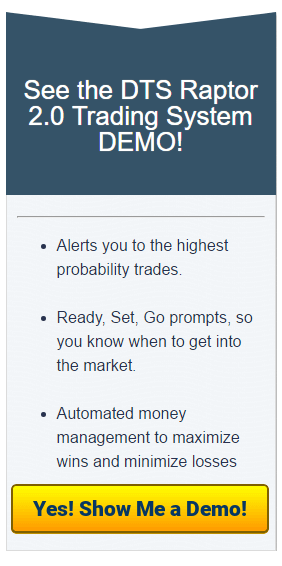Day Trading Tips and Tricks
Trading Volume – The Seeds for Every Day Trading Season
For me, it starts the last few hours of the Labor Day three day weekend. When I become aware of a change in the air. It’s usually a soft and cooler breeze, and it tells me the Summer has quietly ended and we are transitioning into Fall. Just as the leaves will change and a chill will eventually come, the landscape will look different. As in the world of nature, day trading also has its seasons. The market can dramatically change from one period to the next.
 For myself, the trading year always begins in Fall. This period, which ends the summer trading session, generally sees trading volume return to many markets. I mark the end of summer at Labor Day, but much of the time we don’t see the full Fall trading volume return until the end of September. Just as people take vacations during the summer months, the markets almost invariably see a sharp drop in trading volume. Fall sees this activity return to trading as the US, European, and Asian traders “return to work.” For a significant number of companies, Fall is seen as the big push towards Christmas season and the expected revenue that the holidays bring. In addition to the increase in trading volume, we also see price action pick up. Those lazy summer ranges get broken, and price can once again get the momentum it needs to push into new levels. Daily ranges can expand and much of the time we see far less haphazard moves that sputter out.
For myself, the trading year always begins in Fall. This period, which ends the summer trading session, generally sees trading volume return to many markets. I mark the end of summer at Labor Day, but much of the time we don’t see the full Fall trading volume return until the end of September. Just as people take vacations during the summer months, the markets almost invariably see a sharp drop in trading volume. Fall sees this activity return to trading as the US, European, and Asian traders “return to work.” For a significant number of companies, Fall is seen as the big push towards Christmas season and the expected revenue that the holidays bring. In addition to the increase in trading volume, we also see price action pick up. Those lazy summer ranges get broken, and price can once again get the momentum it needs to push into new levels. Daily ranges can expand and much of the time we see far less haphazard moves that sputter out.
This period is one of the best times of the year to trade. With increasing daily ranges, we end up with opportunities for larger trades and potentially excellent trends. As a trader, I shift gears mentally and usually start giving my trades more room to run, rather than just try to aggressively manage to prevent getting stopped out in whipsaw, directionless markets. Rather than trading ranges, we look for breakouts and stronger price moves into new areas. Keep in mind, though, as much of the world’s politicians are “back on the clock”, Fall can also be the fertile grounds for significant news-related events. Always employing a sensible stop behind strong support and resistance is key to surviving spikes. During the Fall trading session, I try to look for trades that give me more multiple protective areas around key support and resistance zones, Fibonacci levels, and trendlines.
 As we pass from Fall to Winter, we move into one of the most dangerous and least preferred trading periods: Mid-December through Mid-January, also known as the holiday trading season. This period, which usually begins between the second and third week of December, can be a precarious place to trade. With trading volume and large traders/institutions out of the picture, we see very flat or jumpy, volatile markets. This period is the only part of the year I NEVER trade. We get a full month or so to worry about things other than trading, which is great because, in many countries, this is the time of year for family, celebrations, and travel.
As we pass from Fall to Winter, we move into one of the most dangerous and least preferred trading periods: Mid-December through Mid-January, also known as the holiday trading season. This period, which usually begins between the second and third week of December, can be a precarious place to trade. With trading volume and large traders/institutions out of the picture, we see very flat or jumpy, volatile markets. This period is the only part of the year I NEVER trade. We get a full month or so to worry about things other than trading, which is great because, in many countries, this is the time of year for family, celebrations, and travel.
 My days of trading abstinence usually end between the second and third week of January. It’s Spring and it’s back to business. Trading volume returns, and we start seeing markets that are digesting holiday sales and revenue. We carry on in this Spring session much like Fall, with good markets to trade. As we head into May, much of the time we see markets start getting ready for Summer and start seeing the last of the big moves on good trading volume.
My days of trading abstinence usually end between the second and third week of January. It’s Spring and it’s back to business. Trading volume returns, and we start seeing markets that are digesting holiday sales and revenue. We carry on in this Spring session much like Fall, with good markets to trade. As we head into May, much of the time we see markets start getting ready for Summer and start seeing the last of the big moves on good trading volume.
June arrives and usually brings summer markets with it. That means tighter ranges, smaller daily moves, and a much quieter market. Overall, the movement seems to decrease, and we see much narrower ranges. Playing the market during this period can be slow, but relatively easy.
 During the summer, price tends to reliably move from the top of a range to its bottom. Stops need not be as protective and smaller targets are preferred. A drawback to this time of year, however, can be periods of absolute boredom. Summer is when you will trading “surprises”. One minute the market is hardly moving, and then suddenly it will make a dramatic move in one direction, only to come back to where it started shortly after. Summer trading is when we must more diligently manage our trading system, and take profits where we can.
During the summer, price tends to reliably move from the top of a range to its bottom. Stops need not be as protective and smaller targets are preferred. A drawback to this time of year, however, can be periods of absolute boredom. Summer is when you will trading “surprises”. One minute the market is hardly moving, and then suddenly it will make a dramatic move in one direction, only to come back to where it started shortly after. Summer trading is when we must more diligently manage our trading system, and take profits where we can.
Of course, in my years of trading, I have never seen two summers be the same, nor two fall trading periods be the same either. My comments here are only generalizations. The market being what it is, we may encounter any conditions at any time. That being said, by paying attention to the changing trading seasons can enable you to be more prepared for the type of trading environment we can likely expect and better be able to take advantage of the trading conditions as they present themselves.
No matter the time of year, you are welcome to join us in the Trade Room. Register HERE.




